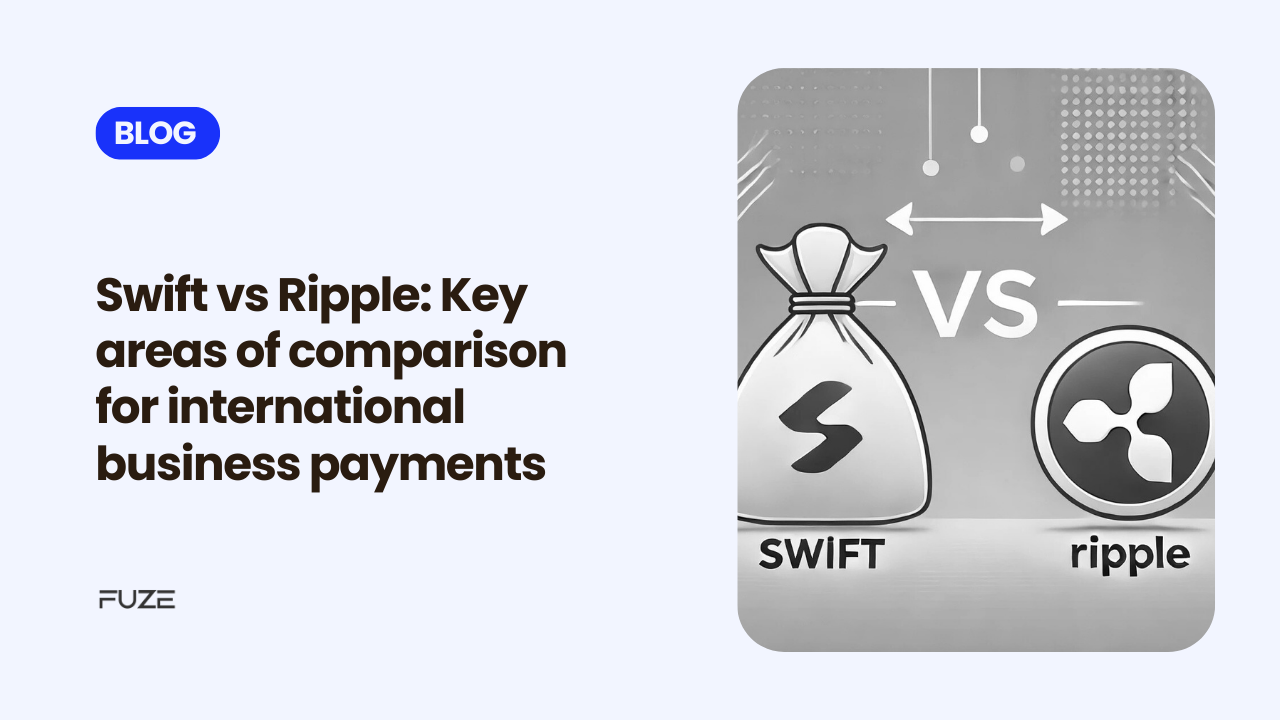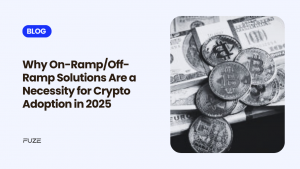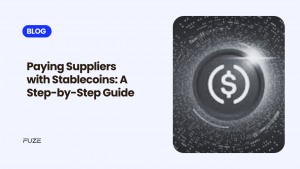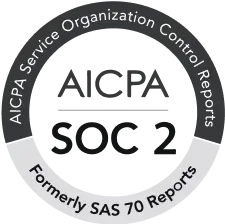According to the Bank for International Settlements (BIS), people sent over $190 trillion across borders in 2023 alone (Source)! That’s a lot of money exchanging hands every day.
At the forefront of this global payment infrastructure is SWIFT – the established leader since 1977. On the other hand, Ripple, a newer player in the game since 2012, is gaining popularity due to its unique selling point of offering a faster and cheaper way to send money internationally.
Embark on a journey with us as we compare SWIFT and Ripple; two giants in the world of international payments. Let’s explore which platform is better suited for the needs of international businesses. Let’s dive in!
SWIFT: The established leader
SWIFT, founded in 1973, has been the go-to system for international banking for decades. It’s like the postal service for banks, allowing them to securely communicate and exchange payment information. While SWIFT doesn’t handle the actual movement of money, it plays a vital role in facilitating cross-border transactions.
However, SWIFT’s reliance on multiple intermediaries and legacy infrastructure can sometimes lead to delays and higher costs, especially for complex transactions. To address these challenges, SWIFT has introduced innovations like GPI to improve transaction speed and transparency.
Ripple: The Blockchain challenger
Ripple, on the other hand, is a newer player in the cross-border payment game. Founded in 2012, Ripple aims to revolutionize international payments using blockchain technology. RippleNet, its global payment network, allows banks to send money directly to each other, bypassing the need for intermediaries.
Ripple uses its native cryptocurrency, XRP, as a bridge currency to provide instant liquidity and settlement. This means that transactions can be completed in seconds, regardless of the currencies involved. Unlike SWIFT, which can take days, Ripple offers a much faster and more efficient way to send money across borders.
Comparing SWIFT and Ripple: Unveiling key differences

When comparing SWIFT and Ripple, ten key factors to consider are technology, transaction speed, cost, security, scalability, network reach, compliance, liquidity, transparency, and future potential.
1. Technology
SWIFT and Ripple use different technologies. SWIFT is a secure messaging system that relies on correspondent banking relationships to settle transactions. It uses a standardized messaging protocol (FIN) to send payment instructions, which the recipient bank processes.
Ripple, on the other hand, uses blockchain technology. It relies on a consensus algorithm to validate transactions on a decentralized ledger called RippleNet. This system removes the need for intermediaries and allows for direct, peer-to-peer transactions. Ripple also uses XRP to provide liquidity, making transactions faster and more affordable.
2. Transaction speed
Transaction speed is a significant difference between SWIFT and Ripple. SWIFT transactions can take one to five days to settle, depending on the transaction’s complexity and the number of intermediaries involved. Although SWIFT GPI has improved this, cutting settlement times to within 24 hours for many transactions, delays can still occur.
In contrast, RippleNet offers near-instant settlements, completing transactions within seconds, regardless of currency or country. This rapid processing is a significant advantage for businesses needing quick cross-border payments.
3. Cost
Transaction costs also differ significantly. SWIFT transactions can be pricey due to the involvement of multiple intermediaries, foreign exchange conversions, and manual processes. These costs can accumulate, especially for smaller transactions or payments to less developed markets.
RippleNet provides a more cost-effective solution. By cutting out intermediaries and using XRP for liquidity, Ripple significantly reduces the fees associated with cross-border transactions. This cost efficiency makes Ripple an appealing option for banks aiming to lower operational costs, making them feel financially prudent in their choice of payment platform.
4. Security
Both SWIFT and Ripple focus on security but take different approaches. SWIFT relies on a secure messaging system with strict compliance and anti-money laundering (AML) checks. However, involving multiple intermediaries can increase the risk of errors and fraud.
Ripple uses blockchain technology, which provides built-in security advantages. The decentralized nature of the blockchain and the consensus algorithm makes it hard for malicious actors to alter or tamper with transaction data. RippleNet also includes compliance features like Know Your Customer (KYC) and AML tools to ensure regulatory compliance, providing a high level of security and reassurance to its users.
5. Scalability
Scalability is crucial for handling the growing volume of cross-border transactions. SWIFT’s robust global infrastructure can process multiple transactions daily. However, its reliance on legacy systems can sometimes limit its ability to scale as transaction volumes increase.
Ripple’s blockchain technology is highly scalable. Its decentralized ledger can handle thousands of transactions per second, making it well-suited to manage increasing transaction volumes as more institutions adopt RippleNet. This scalability makes Ripple a strong candidate for future cross-border payment needs.
6. Network reach
SWIFT’s extensive network is one of its biggest strengths. With over 11,000 financial institutions across over 200 countries, SWIFT is the most widely used cross-border payment system globally. This vast network ensures that nearly any bank can send or receive payments through SWIFT.
RippleNet’s network, while smaller than SWIFT’s, is rapidly expanding. Ripple has made significant strides, particularly in regions where fast and cost-effective payments are highly valued. As of 2023, RippleNet has partnered with over 300 financial institutions, including central banks and payment providers. This rapid growth is a promising sign for Ripple’s future potential.
7. Compliance
SWIFT operates within a well-established regulatory framework and has decades of experience navigating international banking laws. This regulatory stability provides confidence to banks and financial institutions using its network.
Ripple has faced regulatory hurdles, particularly with its use of XRP. In the U.S., Ripple is involved in a high-profile lawsuit with the Securities and Exchange Commission (SEC), which argues that XRP is an unregistered security. While Ripple defends its position, the outcome of this legal challenge could impact its future adoption. Nevertheless, Ripple is trying to comply with regulations and work with authorities to meet local requirements.
8. Liquidity
Liquidity is critical in cross-border payments, especially with less common currencies. SWIFT transactions often require pre-funded nostro/vostro accounts, which can tie up significant capital and limit liquidity.
Ripple addresses this by using XRP as a bridge currency. XRP provides instant liquidity, preventing banks from pre-funding accounts in various currencies. Using XRP lowers transaction costs and frees up capital for other uses, enhancing overall liquidity.
9. Transparency
SWIFT GPI has enhanced transparency in cross-border payments by offering end-to-end tracking. Banks and their customers can see the status of a payment in real time, including any fees deducted by intermediaries.
RippleNet provides similar transparency with its transactions recorded on a public blockchain. The platform allows all parties involved to view the status and details of a transaction, ensuring transparency and reducing the chance of disputes.
10. Future potential
Both SWIFT and Ripple have promising futures, but in different ways. SWIFT’s established infrastructure and extensive network position it as a significant player in international banking. The organization is also exploring innovations in blockchain technology to enhance its services.
With its modern blockchain-based approach, Ripple represents the future of cross-border payments. If Ripple can overcome its regulatory challenges and expand its network further, it can disrupt traditional payment systems. Its technology is well-suited for a future where speed, cost efficiency, and security are increasingly important.
Conclusion: Exploring Beyond SWIFT and Ripple
In this article, we’ve compared SWIFT and Ripple across various aspects like transaction speeds, costs, intermediary roles, liquidity, and regulatory compliance. Every business must assess these factors to find the solution that aligns with their unique needs.
The cross-border payment landscape is rapidly evolving, and alternatives like stablecoins are gaining traction for their liquidity, speed, and regulatory alignment. At Fuze, we recognize the value of diverse payment methods and remain committed to helping businesses discover and implement the best solutions for secure, efficient, and reliable transactions.







